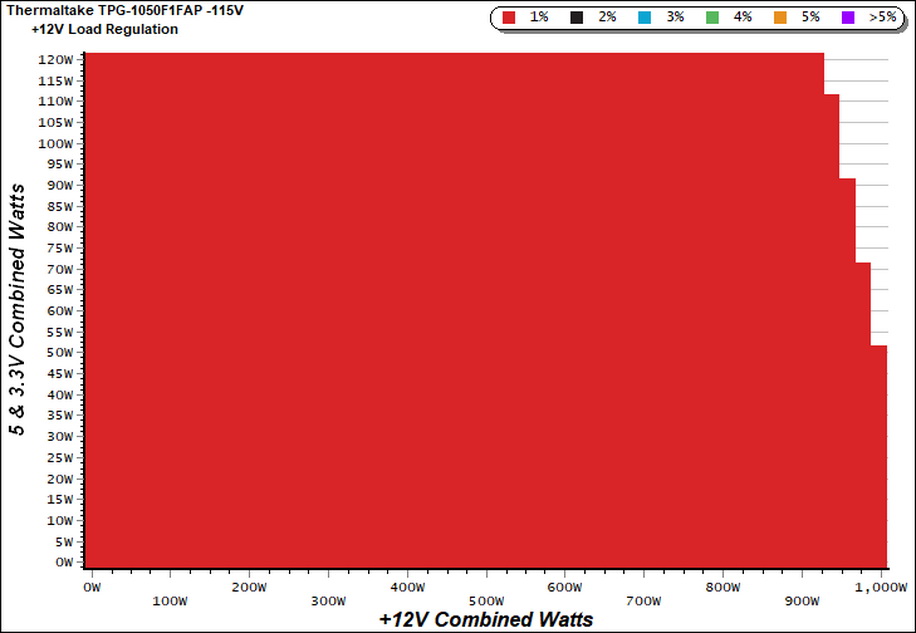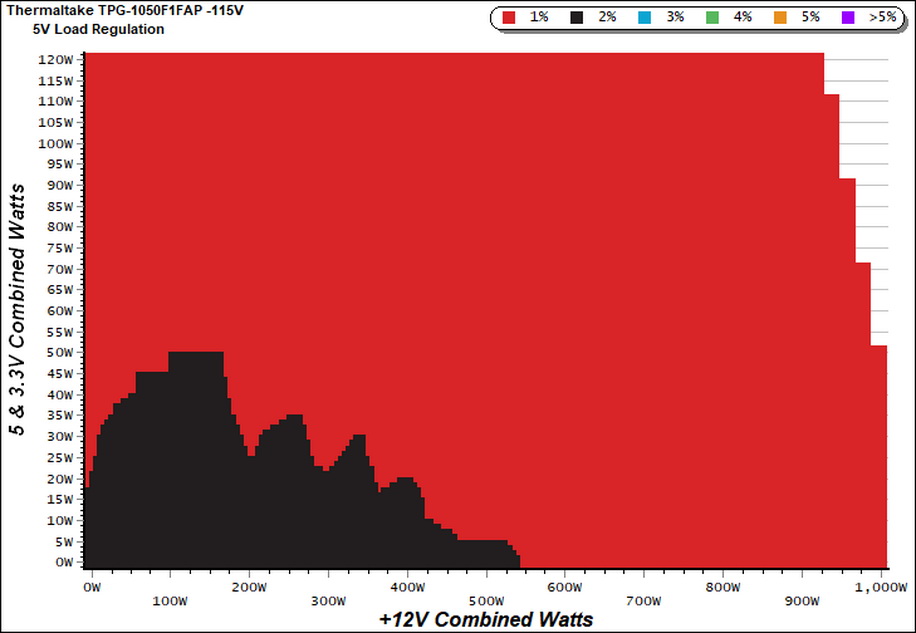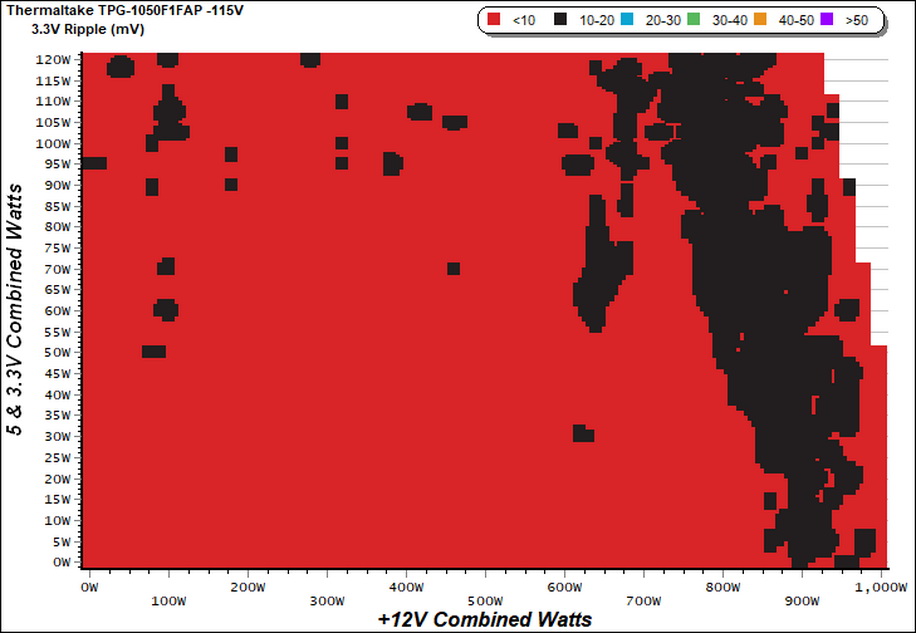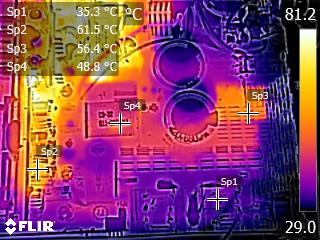Why you can trust Tom's Hardware
Protection Features
Check out our PSUs 101 article to learn more about PSU protection features.
| Protection Features | |
OCP | 12V: 101.6A (121.91%), 12.001V5V: 24.6A (111.82%), 5.020V3.3V: 26.5A (120.45%), 3.268V5VSB: 5.2A (173.33%), 4.890V |
OPP | 1300.35W (123.84%) |
OTP | ✗ (>200°C @ 12V heat sink) |
SCP | 12V: ✓ |
PWR_OK | Proper Operation |
NLO | ✓ |
SIP | Surge: MOV Inrush: NTC Thermistor & Bypass Relay |
The OCP and OPP triggering points are properly set and kudos to CWT (and Thermaltake) for this. There is a major issue though, although we heated the PSU up to 200 degrees Celsius, it didn't shut down. This means that the over-temperature protection is not present or it is badly configured at a very high level. In any case, we didn't raise the temperature further, because we could have caused permanent damage to the power supply.
DC Power Sequencing
According to Intel’s most recent Power Supply Design Guide (revision 1.4), the +12V and 5V outputs must be equal to or greater than the 3.3V rail at all times. Unfortunately, Intel doesn't mention why it is so important to always keep the 3.3V rail's voltage lower than the levels of the other two outputs.

DC Power Sequencing Scope Shots


The 3.3V rail is always at a lower level compared to the other two, so the ATX specification's corresponding requirement is met.
Cross Load Tests
To generate the following charts, we set our loaders to auto mode through custom-made software before trying more than 25,000 possible load combinations with the +12V, 5V, and 3.3V rails. The deviations in each of the charts below are calculated by taking the nominal values of the rails (12V, 5V, and 3.3V) as point zero. The ambient temperature during testing was between 30 to 32 degrees Celsius (86 to 89.6 degrees Fahrenheit).
Load Regulation Charts

Load Regulation Charts


Efficiency Chart
Ripple Charts
The lower the power supply's ripple, the more stable the system will be and less stress will also be applied to its components.

Ripple Suppression Charts



Infrared Images
We apply a half-load for 10 minutes with the PSU's top cover and cooling fan removed before taking photos with a modified FLIR E4 camera able to deliver an IR resolution of 320x240 (76,800 pixels).
Get Tom's Hardware's best news and in-depth reviews, straight to your inbox.

IR Images




Despite the high load (525W) for a ten-minute period, the internal temperatures are kept at normal levels. The only issue that we spotted is the increased temperature of the electrolytic caps which are sandwiched between the modular PCB and the board that holds the +12V FETs.
MORE: Best Power Supplies
MORE: How We Test Power Supplies
MORE: All Power Supply Content
Current page: Protection Features, DC Power Sequencing, Cross-Load Tests and Infrared Images
Prev Page Load Regulation, Hold-Up Time, Inrush Current, Efficiency and Noise Next Page Transient Response Tests, Timing Tests, Ripple Measurements and EMC Pre-Compliance Testing
Aris Mpitziopoulos is a contributing editor at Tom's Hardware, covering PSUs.
